Squishy silicone keys control pitch and volume on ROLI's musical Seaboard
A keyboard by East London technology start-up ROLI, with soft keys that allow musicians to alter the pitch, volume and timbre of individual notes, has come out on top in the Designs of the Year 2014 product category (+ slideshow).
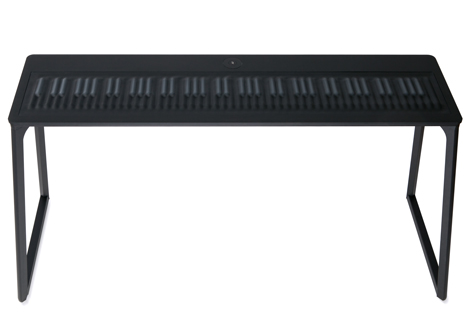
The Seaboard by ROLI replaces the distinctive black and white keys of a typical piano with a continuous surface made from moulded silicone fixed on top of pressure-sensitive controls.
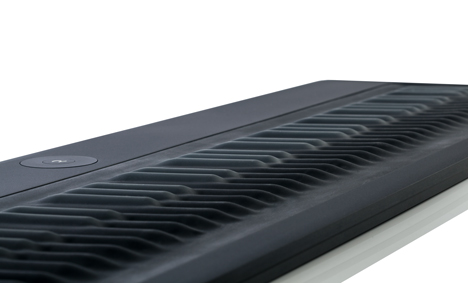
The raised keys offer a tactile representation of the notes, which can be manipulated by wiggling or sliding a finger across the surface.
ROLI CEO Roland Lamb first had the idea for the Seaboard while studying on the Design Products course at London's Royal College of Art. "As a jazz pianist myself, I had always wished I could do more to shape a piano note's pitch, timbre and continuous dynamics," Lamb told Dezeen.
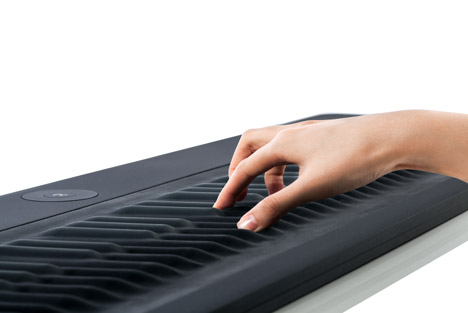
"I thought I may be able to reinvent the piano keyboard, so that polyphonic pitch bend, vibrato and per-note dynamic changes are all available at one's fingertips in real-time," Lamb added.
The pressure-sensitive surface allows the musician to produce different effects using intuitive movements and feedback that mimic the actions used to play traditional musical instruments.
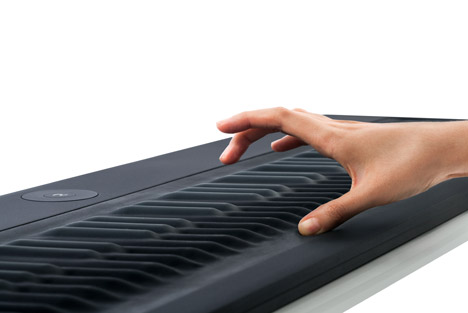
Sliding a finger over the notes changes the pitch in a similar way to playing a string instrument, while changes in pressure alter the volume.
Smooth channels along the top and bottom of the playing surface make it easier to transition between different pitches by sliding from one note to the next.
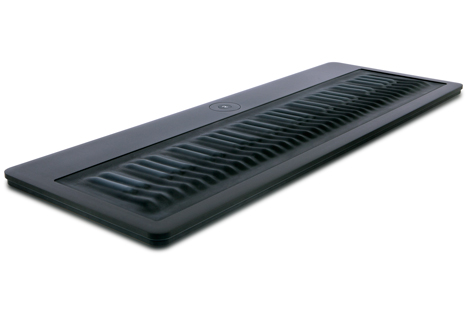
A touch-operated dial controls the different sound settings, which can be customised by the user and enable the Seaboard to simulate various instruments.
Lamb and his team at ROLI have spent five years refining the Seaboard and are currently supplying orders of the full-sized Limited First Edition keyboard, while preparing the smaller versions called Stage and Studio to be shipped.
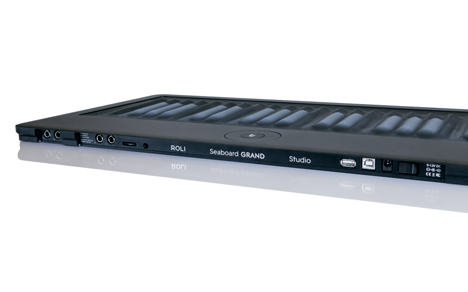
"What's most exciting about the Seaboard's future is witnessing what the Seaboard-playing community does with it," said Lamb, who added that the technology developed for the Seaboard could be applied to other products in the future.
"The SEA Interface technology was designed to be adapted into any form factor, so it can indeed be used in other ways, including different instruments. This is a very active area of research and development for us."
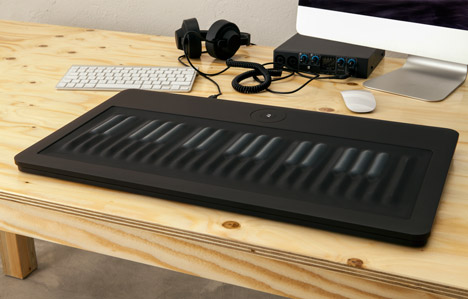
The Seaboard has been presented at events including South by Southwest in Austin, Texas, and the NAMM music conference in Anaheim, California, and Lamb said the reaction so far from musicians who have had a chance to try it out has been extremely positive.
"What we've heard and seen from influential recording artists and producers who span the genre spectrums, touring musicians, composers, DJs, as well as students and casual players has been really validating," he claimed.
Alongside the Seaboard on the shortlist for Designs of the Year 2014 is Zaha Hadid's curvaceous Heydar Aliyev Center, a public art project featuring life-size paintings of military drones, and a furniture collection by Konstantin Grcic.
Dezeen is media partner for Designs of the Year 2014, which is organised by London's Design Museum. The overall winner will be announced at St Martins Lane Hotel in London on 30 June.